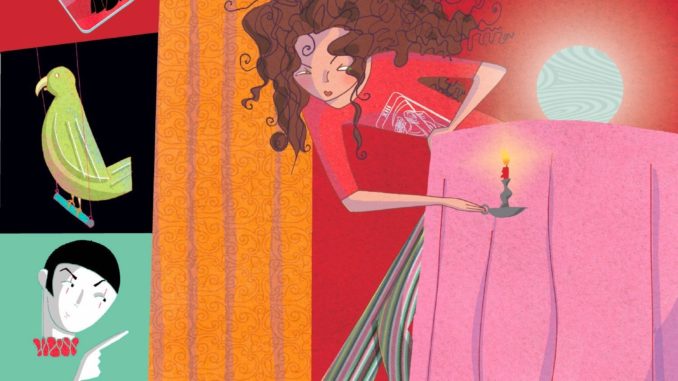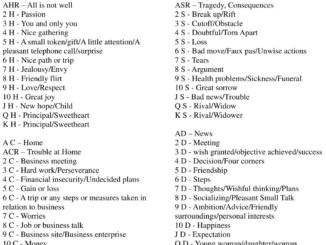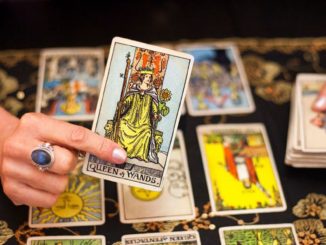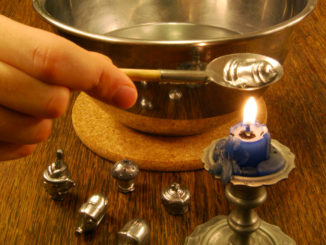
Tarot cards have existed in one form or another since early medieval times. Most historians will tell you that Tarot decks first appeared in northern Italy sometime between 1410 and 1430, that they most likely began as extensions of the four-suit playing card decks already in existence, and that they were originally referred to as “carte da trionfi” or “triumph cards.”
The oldest extant Tarot card decks, painted by mid-15th century artists, were probably commissioned by the Visconti-Sforza family which ruled Milan at the time. Almost from the beginning, and certainly by 1540, Tarot cards were being used to predict the future. Divination, however, may actually have preceded the invention of the Tarot; a book known as The Oracles of Francesco Marcolino da Forli spells out a simple system of divination utilizing the coin suit of common playing cards.
Although not everyone believes in the power of the Tarot, it has clearly established itself as one of the most popular (if not THE most popular) method of divination. Formerly conjuring up images of nomadic gypsies and dirty carnival booths, today’s Tarot practitioners are mainstream business men and women with attractive storefronts, nifty websites, and in some cases highly profitable corporations employing hundreds of psychics. Tarot is big business.
But is Tarot a legitimate form of divination? Can it really be used to predict the future–or is it all just “entertainment” as most phone psychics are required to tell you when you call their hotlines.
In the Netherlands, at least, Tarot seems to be taken fairly seriously. In August of 2007, the Dutch government began funding Tarot card readings for the jobless. That’s right, as part of the unemployment system you can get a free Tarot reading to help get you back on your feet. And they may be headed in the same direction in New York City which offers, among its institutions of higher learning, a Tarot school where anyone can enroll to earn a degree in tarot card reading.
If you think it’s just the poor, uneducated, and bored who go in for Tarot readings, think again. The rich, powerful, and well-educated are not immune to the lure of the Tarot. Christian Dior was reportedly in the habit of consulting the Tarot to determine the most opportune day to preview his collections, as well as the best time to sneak away for a little vacation. Ronald Reagan’s tenure as President of the United States was haunted by whispers of tarot cards being slipped into the White House through the back door. When Donald Regan, Reagan’s chief of staff, wrote a book detailing his time in the White House, it confirmed these speculations, revealing that Nancy Reagan had an almost obsessive interest in astrology and, in fact, had been known to schedule some of the President’s official activities based on input from Tarot cards.
In June of 2000, during the height of a controversial U.S. Presidential campaign, well-known astrologer Claudia D. Dikinis came forward with the revelation that, according to her Tarot cards, George W. Bush would win the presidency–this in spite of her personal preference for Al Gore.
In July of 2007, Sanjay Dutt, a Bollywood actor, was convicted of illegal possession of firearms and sentenced to six years of jail time. Undaunted by his sentence, famed Tarot reader Mita Bahn quickly pronounced, after studying her Tarot cards, that Dutt would be set free. She was right. Just two weeks later, Dutt was granted interim bail.
If it seems all of these odd occurrences involve the rich and famous, it is perhaps only because they are more in the public eye. In 1986, Theresa Jackson, a Florida woman, sat at a table and read the Tarot with her daughter Tina Mancini, 17. Mrs. Jackson later told authorities that “The cards told me a blond child of mine was going to die.” Four days later, on March 24, 1986, Tina put a .357-caliber Magnum pistol in her mouth and pulled the trigger.
While such anecdotes seem to suggest a real power behind the Tarot, it is admittedly circumstantial evidence–they may merely be unusual events that happened to coincide with previous readings. Or perhaps the readings themselves were a self-fulfilling prophecy. We won’t ever know for sure. Unless, of course, you’re willing to dig out those old Tarot cards gathering dust in your closet … and ask them yourself. Do you dare?
Proudly WWW.PONIREVO.COM



